|
How much time do you have to spend training outside of what you do for your sport specifically? After practices, competitions and the other daily life activities how many hours are there left to train? This is a question that needs to be answered thoroughly and honestly to take full advantage of being on a training program that is best suited to your time availability. Everyone’s time is limited so the question is how can we be the most efficient with ours.
With limited time during certain parts of the sports calendar there has to be laser like focus on what the most important things are that need to be done. When an athlete is in season their time spend in the training facility will be decreased compared to the off season. This is a probably the time of the year where their time will be the most limited. There is no room to be adding things to the training program for the sake of more being better. For that matter, during any part of the sport year more being better is nearly never the case that should be taken with few exceptions. This will be vastly different when comparing a younger athlete to a veteran. And when I say younger I am referring to a 12 yr old and a veteran would be 18 yrs old if he had been training since he was 12. A 12 yr old that has no time constraints and has never trained before would probably do great on three training sessions a week no matter if he is currently in season or off season. That would be the best case scenario. If three times a week is not in the cards I would not go below training twice a week. Training once a week, no matter the time constraints, will produce limited results. For a more seasoned athlete, let’s say an 18 yr old baseball player that has been training for 6 years now and is in season and pitches twice in the upcoming week has to schedule their training volume for the week. Now it gets a little trickier. This week might only be 1-2 sessions depending on how he is feeling. It might involve more soft tissue work. Maybe he is feeling great and wants to get a few sets of heavy deadlifts in relative to an in season program. The next week he might pitch once or have an off week. What happens then? There are many variables when it comes to scheduling and coaching a higher caliber athlete that need to be accounted for. There is also no way to predict how an athlete is going to feel in the middle of a season or how much time they have to commit to training on a given week, but a coach with a good eye will make the best of both situations. The point being, do not get obsessed with hitting a certain number of training sessions every week for the whole year. Take into consideration the time of the year as it relates to the sport being played, how experienced the athlete is as far as training experience and how recovered the athlete is for the training session. With all these things taken into consideration a proper training program can be put together.
0 Comments
James DeAndressi B.S, NASM-CPT has been interning at SportPerformanceU this summer and will be today’s guest blogger. James earned his bachelor’s degree in exercise science from Southern Connecticut State University and is planning on attending school this fall to become a physical therapist assistant. Below you will find his piece on why including a proper warm is so important. It is clear based on research, observation, and comparison that a good warm up before a workout can increase the overall quality of how you spend your time in the gym. The question is however, what makes up a good warm up and why is the warm up part of the workout important? All trainers may have different opinions and different ways of training but for the most part, it is fair to say that most qualified trainers in any setting should agree with the warm up being a key part to an individual’s daily routine. At SPU we will typically start a client with soft tissue work as well as some specific dynamic warm up exercises. Soft tissue work for a client will be mainly foam rolling or simple active massage unless the trainer is certified and/or licensed as a professional health care provider. They need to be legally bound to doing some type of manual soft tissue work on a client. Foam rolling is safe, effective, and backed by research to roll out fascia to fix cross linked muscle fibers. This will in turn make the muscles fire and perform the best it can for that specific person at that specific time. Foam Rolling Techniques A good warm up needs to consist of anything we as trainers believe will have a positive impact on our client during the workout. Mobility, or in other words, the ability to move freely through a given range of motion is one component to a good warm up. Exercises to increase range of motion include ankle dorsiflexion at a wall or shoulder wall slides. Corrective exercises are another key component. These exercises will be put on a client’s program depending on the results of some type of movement analysis. Corrective exercise is a broad topic but in the simplest of terms, they are specific exercises that will be targeting some type of human movement deficiency. Examples of some corrective exercises would be Unilateral or Bilateral Internal/External Rotation of the shoulder joint or hip joint and bird dogs to increase core stability as well as to strengthen a specific deep muscle connected to the spine which can cause pain. Trainers should take note of any types of movement deficiencies during every training session in order to progress or add/subtract corrective exercises. In other words, analyzing movement should not be an afterthought but should be constantly on a trainer's mind during sessions. To learn more about SPU’s specific biomechanical analysis, read our blog which gives some detail on this topic. Dynamic exercises are another way we can prepare a client’s body for the upcoming workout. At SPU this is the final part of the warm up before going into our power, strength, speed, and conditioning blocks. According to Eric Cressey, in his book Maximum Strength “we are focusing on raising body temperature which in turn will raise muscles temperature. Lubricating muscles and joints as well as increasing mobility in key joints while enhancing stability in others in order to perform strength movements more efficiently” is also part of the equation. Some examples of dynamic exercises would be leg raises or a lateral shuffle. Trainers who understand the importance of a well-balanced exercise program will have a warm up section that is not overlooked, rushed, or inefficient. For a client’s own personal well being, I would recommend changing trainers if they did not properly warm up a client before a workout. Fitness professionals should all look at the warm up as a line of defense, if you will, for decreasing injury. As fitness professional including a solid warm up is a necessity. For as long as we can remember, static stretching has been considered a cure-all for injuries and maladies. What's the first thing your coach tells you to do when you get hurt? Most likely "go stretch it out." While static stretch serves a purpose, it's really not a cure-all.
First, it's not really a good warm up. Most folks are up to date on this and use a dynamic warm up, but I still see some teams do static stretching prior to activity. (Just as an aside, static stretching is where we hold a limb at the end range of motion of a particular joint for a set time; dynamic stretches include continuous movement). Using static stretching as a warm up has actually been proven to decrease physical outputs. Second, most injuries don't require basic static stretching. Take a muscle strain, for instance - the muscle is damaged because at some point it took on too much force at too great a range of motion. Stretching the muscle even further doesn't really accomplish anything positive. There are some cases where physical therapists and doctors might use stretching during a rehab protocol to help regain a lost range of motion, but this is for much more traumatic injuries that have greater impact to function and require a more comprehensive healing method. But, speaking of range of motion... Third, static stretching isn't always the solution to a "tight" muscle. In many cases, tightness is a symptom of something else, like neuromuscular patterning or stability in an adjacent segment/joint. In this case, stretching accomplishes very little. Have you ever met anyone who says they stretch all the time and still seems very tight? It happens fairly often - stretching isn't the answer to every problem. In some cases, it even makes the problem worse. A kid with limitation in the hip flexor might go to stretch the hip flexor and instead just arch his lower back giving the illusion of hip stretch, but really create low back problems without actually doing anything to the hip. In reality, the problem might just have been a weakness somewhere in the hip complex that made it not willing to move into a full range of motion. The point of this article is just to point out that stretching isn't a cure-all - it's one of many tools that we have, and to be honest, it's one of the smaller, less useful ones. Stability work, soft tissue work, modified stretching with small movements and controlled isometric contractions, and strength all tend to get better results for increasing mobility than stretching. Alex Drayson As much as we try to prevent injuries from taking place with solid training plans, quality nutrition and the right amount of R&R, we still have a pretty good chance of running into an injury sooner or later. How serious that injury is will depend on a multitude of factors. Were you playing football and took a helmet to the side of the knee or on the track sprinting the first 100 meters of your 400 meter race? Whatever the injury is and how long it keeps us out will vary, but how you respond to an injury will likely dictate how well you recover and how fast you return to play.
Attitude is everything. If you have the right attitude you can accomplish anything. Our mind is by far the most powerful tool we have. If you have two athletes with the same injury and everything else is equal besides their attitude it is easy to say you would take the athlete with the better attitude. But it’s not just that their attitude is better, it is that their attitude will make their recovery that much more successful. If your mindset is to get back to the level of play you were at before the injury took place your focus on the things you have control of will be greater. Those things include your training, nutrition and recovery program. Having the right attitude with or without an injury is something that has to be developed. It takes work and doesn’t happen just because you want it to. Practice being more positive about the good things you have and worry less about the negative. Think about the good things that can happen today instead of bad things that might happen. Be grateful for what you have. Stop complaining. Help others; it will make you feel better about yourself and your situation. You have the choice to be a positive or negative person and the choice you make will affect you as an athlete. Having a positive attitude will make your outlook on your injury less daunting and leave you will more energy to focus on getting back to play. Think positive, it’s amazing the possibilities that will open. |
Archives
July 2024
Categories
All
|
Proudly powered by Weebly

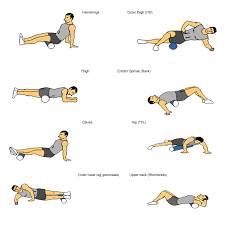
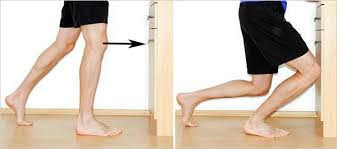
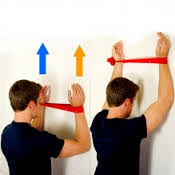
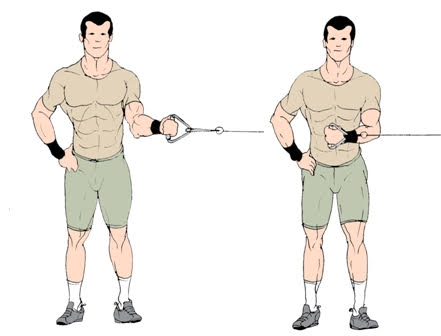
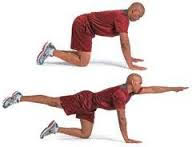
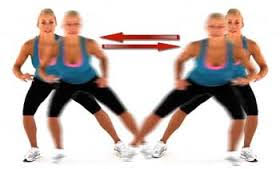
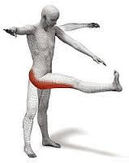
 RSS Feed
RSS Feed